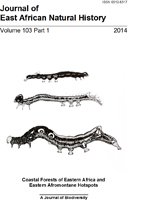Characterisation of benthic invertebrate communities, taxonomic abundance and composition provides information that is used during river bioassessment. However, the mesh size of the sieves used during processing of invertebrate samples may affect the estimation of taxonomic abundance and composition. In the current study, the effect of sieve mesh size (>0.5 and <0.5 mm) on the estimation of invertebrate taxonomic abundance and composition was tested in the Honi River (Kenya) in 2011. The abundance of invertebrates retained by the >0.5 mm mesh sieve was significantly (p <0.05) lower than that found in the total sample. At the Honi River midstream site, most invertebrates (85%) belonged to the <0.5 mm fraction and were dominated by chironomids. Hydracarina and ostracods were only found in the <0.5 mm fraction of invertebrates. This study shows that sieve mesh size should be taken into consideration when characterising benthic invertebrates in rivers where invertebrate taxa are unknown and with high abundances of small sized invertebrates.
How to translate text using browser tools
1 October 2014
Effect of Sieve Mesh Size on the Estimation of Benthic Invertebrate Abundance and Composition in the Honi River, Kenya
John Gichimu Mbaka,
Charles Mwithali M'Erimba,
Henry Karanja Thiongo,
Jude Mutuku Mathooko
ACCESS THE FULL ARTICLE
benthic invertebrates
Kenya
river
sieve mesh size





